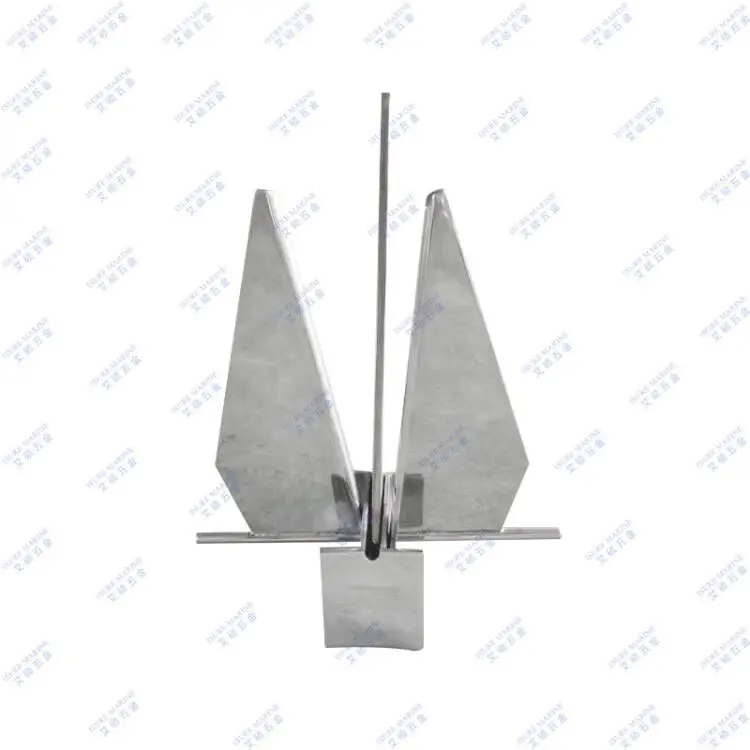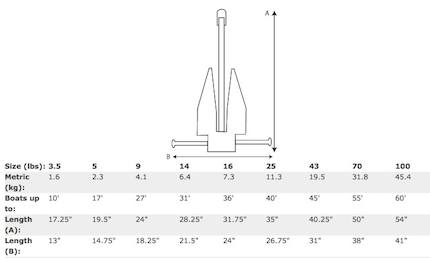Indicators on Fluke Style Anchor You Need To Know
Wiki Article
Getting The Fluke Style Anchor To Work
Table of Contents4 Easy Facts About Fluke Style Anchor ShownThe Basic Principles Of Fluke Style Anchor The Facts About Fluke Style Anchor UncoveredAbout Fluke Style Anchor
Claw supports are easier to set, less most likely to foul, and also less complicated to reset if they drag. However, they do not supply as much holding power as a fluke-style anchor. Plow-style anchors are the most typical sort of support made use of on little to medium-sized watercrafts. They are simple to deploy and also retrieve and also offer great holding power in many conditions.They are a lot more effective at setting in soft bottoms, and they have a greater holding power-to-weight proportion. Mushroom supports are the biggest and also heaviest kind of anchor, and also they are usually used on large boats or in deep water. They have the highest possible holding power of any kind of support, but they can be challenging to deploy as well as recover.
It is developed to penetrate the sea flooring as well as provide a secure hold for your boat. Fluke anchors are usually constructed from high-grade products such as galvanized steel as well as are construct to last. Fluke anchor dragging can be an aggravating issue for seafarers. This sort of dragging occurs when the anchor line ends up being tangled around the support's flukes, avoiding it from establishing properly.
This gadget affixes to the support line as well as prevents it from twisting. One more alternative is to utilize a longer anchor line. This will provide the support much more area to set appropriately and also will reduce the chances of the line becoming twisted. Inspect the rode to make certain it is not fouled or entangled.
About Fluke Style Anchor
Examine the support itself to see if it is harmed or if the flukes are not dug in properly. If so, attempt resetting the support. If all else falls short, you can attempt relocating the boat to a various location.This style allows for a correct setting despite the angle the anchor lands. When choosing your next support visit us below at Wholesale Marine. We provide a company foundation of skilled customer solution reps to help you as you peruse our products. Our cost match guarantee, same-day delivery, as well as complimentary shipping for carts over $99 are all cherries on top of our top quality product.
By Tom Problem, Last updated: 5/28/2020 Anchor rodes include a size of chain, rope or a combination of rope and also chain that connects an anchor to a watercraft. The rope portion of anchor rodes usually is composed of nylon three-strand, 12-strand or double-braid line. Nylon is the material of option, because it is elastic as well as able to take in the shock lots came across when securing - Fluke Style Anchor.
Lots of tiny boats utilize anchor rodes made completely of three-strand nylon line. This is since all-rope rodes are lightweight, inexpensive as well as simpler to stow than rope-chain or all-chain rodes. All-rope rodes can be rather solid, they lack the chafe resistance of chain and also are as a result not proper for anchoring near reefs, among rocks or in anchorages with great deals of surge and also wave activity.
The Buzz on Fluke Style Anchor

This right here minimizes the advice demand for lengthy extent (other than in superficial water) because the chain is heavy as well as lies on the bottom till extreme conditions are experienced, when even more range might be needed. Considering that chain has extremely little flexibility, care should be required to stop the chain from coming to be "bar limited" in high winds by utilizing a snubber made from nylon line.
Quality 43, called G4 or HT; made from high-carbon steel. G4 is the preferred chain for securing or windlass applications, as well as has twice the functioning lots of BBB chain, so you can make use of a smaller sized size with the very same toughness.
BBB or "Triple B" has a consistent pitch short link, and also functions well on windlass gypsies. BBB utilized to be the most prominent type for windlass styles of the past, but has actually been replaced by G4. Evidence Coil does not have an uniform pitch and does not collaborate with support windlasses.
Excitement About Fluke Style Anchor
Little galvanized irons attach the anchor to the length of chain, and also attach the chain to the her response thimble on the support line. Fluke Style Anchor. Bear in mind to utilize the "next measure" in shackles; a length of 1/4" chain would certainly be matched to a 5/16" bind. This system, with a lengthy length of three-strand nylon line, a modest size of chain and an appropriately sized support will satisfy the needs of the majority of sailors, with boats up to the 30' dimension variety.
High-strength chain like these allows you to decrease a dimension which minimizes the chain's weight by about 30%, while achieving the exact same functioning tons capacity as well as ultimate stamina. Matching support chain to a certain vessel can be challenging, given that the windage of the vessel is probably the vital choice variable, and windage is difficult to establish.
Report this wiki page